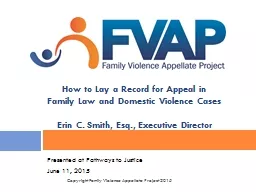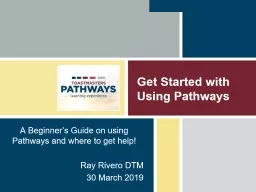PPT-Presented at Pathways to Justice
Author : yoshiko-marsland | Published Date : 2019-12-06
Presented at Pathways to Justice June 11 2015 How to Lay a Record for Appeal in Family Law and Domestic Violence Cases Erin C Smith Esq Executive Director Copyright
Presentation Embed Code
Download Presentation
Download Presentation The PPT/PDF document "Presented at Pathways to Justice" is the property of its rightful owner. Permission is granted to download and print the materials on this website for personal, non-commercial use only, and to display it on your personal computer provided you do not modify the materials and that you retain all copyright notices contained in the materials. By downloading content from our website, you accept the terms of this agreement.
Presented at Pathways to Justice: Transcript
Download Rules Of Document
"Presented at Pathways to Justice"The content belongs to its owner. You may download and print it for personal use, without modification, and keep all copyright notices. By downloading, you agree to these terms.
Related Documents














